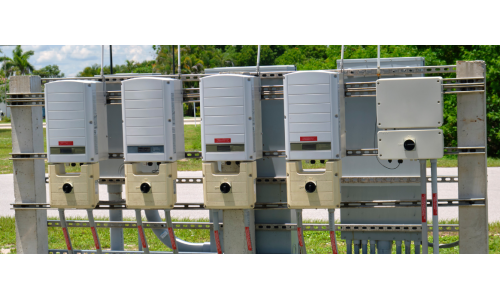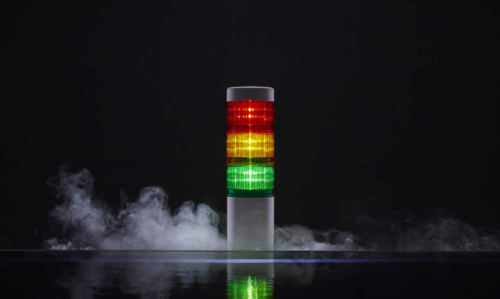W dzisiejszym artykule przyjrzymy się fascynującemu tematowi falownika i jego roli w instalacjach przemysłowych. Falowniki, nazywane także inwerterami, są niezwykle wszechstronnymi urządzeniami, które odgrywają kluczową rolę w przemyśle. Dlaczego są tak ważne i w jaki sposób mogą poprawić efektywność procesów przemysłowych? Zapraszamy do lektury.
Debes estar logueado
Últimas publicaciones
-
Integracja falownika z systemem zarządzania energią w budynkuRead more
W dzisiejszych czasach efektywne zarządzanie energią w budynkach staje się coraz bardziej kluczowym aspektem zrównoważonego rozwoju. W tym kontekście, technologie fotowoltaiczne, takie jak panele słoneczne, zdobywają na popularności. Jednym z kluczowych elementów tych systemów jest falownik. W dzisiejszym artykule przyjrzymy się, dlaczego integracja falownika z systemem zarządzania energią w budynku jest tak ważna.
-
Falownik a możliwość sprzedaży nadmiaru energii do sieciRead more
W miarę jak rośnie zainteresowanie energią odnawialną, farmy fotowoltaiczne stają się coraz bardziej popularne. Jednym z kluczowych elementów tych instalacji jest falownik. W tym artykule omówimy, w jaki sposób falownik wpływa na możliwość sprzedaży nadmiaru energii do sieci.
-
Optymalizacja Efektywności Energetycznej: Redundancja Falowników w Dużych Farmach SolarnychRead more
Farmy solarnych odgrywają coraz większą rolę w produkcji energii elektrycznej na całym świecie. W miarę jak zainteresowanie energią słoneczną rośnie, tak też rosną wyzwania związane z utrzymaniem niezawodności i efektywności tych instalacji.
-
Falownik hybrydowy i magazynowanie energii: Nowa era w samowystarczalności energetycznejRead more
W dzisiejszych czasach energia słoneczna, pozyskiwana dzięki panelom fotowoltaicznym, staje się coraz bardziej popularna i dostępna. Dzięki temu, gospodarstwa domowe i przedsiębiorstwa mają szansę przekształcać energię ze słońca na elektryczność, co nie tylko obniża rachunki za prąd, ale również wpisuje się w globalne wysiłki na rzecz ochrony środowiska.
-
The Development History of Photovoltaics: From Discovery to the PresentRead more
The history of photovoltaics is a fascinating journey that began with humble experiments and scientific exploration. Today, photovoltaics is a key player in renewable energy production and the fight against climate change.
-
Components of a Photovoltaic Installation: The Key to Solar EnergyRead more
Solar energy, also known as photovoltaics, has become one of the key sources of renewable energy worldwide. To better understand how this technology works, it's worth examining its components and the roles they play in the process of generating solar energy.
-
Nowości w Technologii Fotowoltaicznej: Przyszłość Energetyki SłonecznejRead more
Energetyka słoneczna, zwłaszcza w postaci fotowoltaiki, odgrywa coraz ważniejszą rolę w globalnym miksie energetycznym. To odnawialne źródło energii ma ogromny potencjał, a nowości technologiczne wprowadzane w dziedzinie paneli fotowoltaicznych sprawiają, że fotowoltaika staje się jeszcze bardziej atrakcyjna.
-
Fotowoltaika w Krajach o Dużej Ilości Słońca: Potencjał i KorzyściRead more
Kiedy myślimy o krajach o dużej ilości słońca, często wyobrażamy sobie nie tylko piękne plaże i klimatyczne upały, ale także ogromny potencjał do wykorzystania energii słonecznej. To w tych regionach promieniowanie słoneczne jest obfite i dostarcza wyjątkowe możliwości rozwoju fotowoltaiki.
-
Photovoltaics in Household: Savings, Benefits and TipsRead more
Photovoltaics offer many benefits for households. With photovoltaic panels, households can significantly reduce their electricity bills or even eliminate them entirely. It's an efficient source of free energy.
-
Photovoltaics and Energy Storage: Technologies and Practical ApplicationsRead more
Photovoltaics, the conversion of solar energy into electrical energy, plays a pivotal role in electricity production in today's world. However, due to the inherent instability in renewable energy production, it is necessary to seek innovative solutions for efficient energy storage.
-
Cost and Return on Investment Analysis for Solar PanelsRead more
Solar energy plays a significant role in global efforts towards sustainable development and combating climate change challenges. Solar panels, especially photovoltaic ones, have become a popular solution for generating clean electrical energy.
-
Photovoltaics and Energy StorageRead more
Photovoltaics plays a crucial role in delivering clean electrical energy, but one of its challenges is the production instability resulting from weather conditions.
-
Environmental Benefits of Photovoltaics: Environmental Protection and Sustainable DevelopmentRead more
Photovoltaics, the production of electrical energy from solar radiation, plays a pivotal role in addressing the challenges posed by climate change and environmental protection.
-
Cómo funcionan las fotovoltaicas solares: El principio de los paneles solaresRead more
La fotovoltaica es un campo que desempeña un papel crucial en la generación de energía eléctrica sostenible. Uno de los componentes clave de los sistemas fotovoltaicos es el panel solar.
-
SILIGAINE 15C5 – bezpośredni zamiennik koszulek kablowych OsKsRead more
Porównanie SILIGAINE 15C5 a SILIKONOWYCH KOSZULEK ELEKTROIZOLACYJNYCH (OSKS): Które są najlepsze dla Twoich zastosowań? W dzisiejszych czasach wybór odpowiedniego materiału izolacyjnego jest kluczowy w wielu dziedzinach przemysłu elektrotechnicznego. Dla klientów, którzy potrzebują niezawodnej izolacji przewodów, dwie popularne opcje, SILIGAINE 15C5 i SILIKONOWE KOSZULKI ELEKTROIZOLACYJNE (OSKS), oferują wiele zalet. W tym artykule dokładnie przyjrzymy się tym dwóm produktom, porównując ich...
-
LR Series: Perfection in Light and SoundRead more
We would like to present to you the LR Series as a perfect example of quality in the field of lighting and sound. This product series serves as a distinct response to the needs of users seeking excellent lighting and exceptional sound quality in the lighting and acoustic industry.
-
New 800A/1200V Full SiC ModuleRead more
The evolution of SiC technology in power modules and its principle loss reduction potential are shown in Figure 1. Mitsubishi has developed two new full SiC module types with 800A and 1200A rated currents and 1200V rated voltage [1]; [2]. This article is describing the 800A module.





















